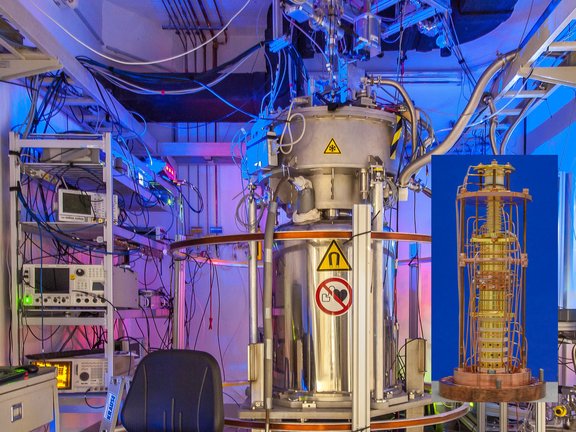Highly charged ions (HCI) are excellent candidates for the search of new physics. These atoms, from which almost all electrons were removed, exhibit some extraordinary properties. Because only few remaining electrons are bound to the nucleus, transition energies between different states can often be calculated very precisely by quantum electrodynamics (QED) – comparison to measurements thus constitutes a test of QED. Some transitions are very narrow, which makes them interesting candidates for highly precise optical clocks or for the search of a possible time variation of fundamental constants.
However, such actually wanted narrow transitions are hard to find for laser spectroscopy in practice, in case they are not predicted precise enough by the theory. In addition, the number of fluorescence photons from those transitions is low, which makes it difficult or even impossible to detect them. Physicists from the group of Sven Sturm at the Max Planck Institute for Nuclear Physics (MPIK) in Heidelberg, Germany and collaborators from the group of Wilfried Nörtershäuser of the Technical University Darmstadt, Germany developed a novel technique to overcome this problem, enabling the usage of HCI for precision experiments.
To this end, the physicists used the recently commissioned ALPHATRAP Penning trap experiment at the MPIK. This apparatus allows to inject arbitrary HCI into a superconducting magnet, where they can be captured and stored in a Penning trap at around -269°C (4.2 K). The extremely good vacuum inside the tap (below 10-17 mbar, lower as in outer space) ensures storage times of months, necessary for the measurements using a single HCI. Dedicated self-developed superconducting electronics is used to “listen” to the motion of a single ion like a high-sensitivity microphone and to determine the frequency of the motion.
The ion in the trap behaves like a precessing gyroscope; the orientation of the spin can take two distinct orientations relative to the magnetic field. Crucial for the novel method is the possibility to determine the spin state of the ion – namely if the spin is oriented parallel (‘’spin up’’) or anti-parallel (‘’spin down’’) to the magnetic field. In case the laser hits the transition searched for, the spin state gets changed, which can be “heard” as a tiny change in frequency.
“The extraordinary high fidelity with which we can measure the spin state at ALPHATRAP allows us to scan the laser across a large frequency range. If the looked-for transition lies within the scanned range we can detect a change in the spin state and this way iteratively constrain the frequency range“, explains Sven Sturm.
In the herein mentioned experiment, using this technique, the fine structure transition in boronlike (meaning five electrons remain bound to the nucleus) argon was measured. In regular atoms and ions, the energy difference of the fine structure amounts to tiny values, in HCI however it is drastically increased and it is possible it becomes an optical transition. The achieved precision of the result improves previous measurements by about two orders of magnitudes. “In the current conception of the experiment, the precision is limited by the temperature of the ion and the accuracy of the laser system. For the future we work on reducing these limitations by using laser cooling for the ions and an improved stabilization of the laser, which will improve the precision”, says Alexander Egl, the PhD student who performed this experiment. “We can hope for further intriguing experiments with this novel technique.”
Original publication:
Application of the Continuous Stern-Gerlach Effect for Laser Spectroscopy of the 40Ar13+ Fine Structure in a Penning Trap, Alexander Egl, Ioanna Arapoglou, Martin Höcker, Kristian König, Tim Ratajczyk, Tim Sailer, Bingsheng Tu, Andreas Weigel, Klaus Blaum, Wilfried Nörtershäuser, and Sven Sturm, Phys. Rev. Lett. 123, 123001, doi: 10.1103/PhysRevLett.123.123001
